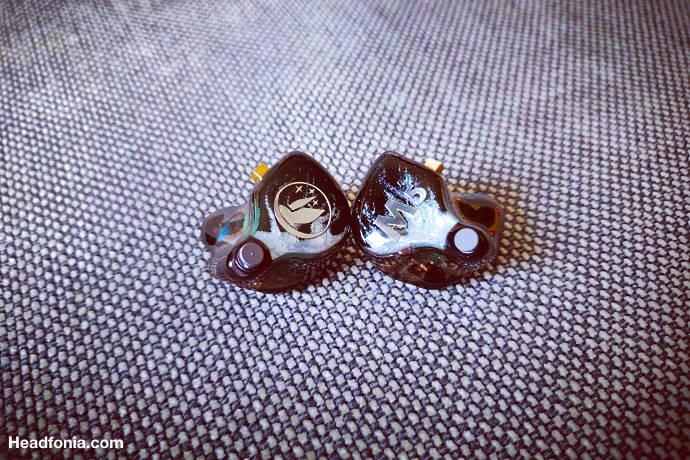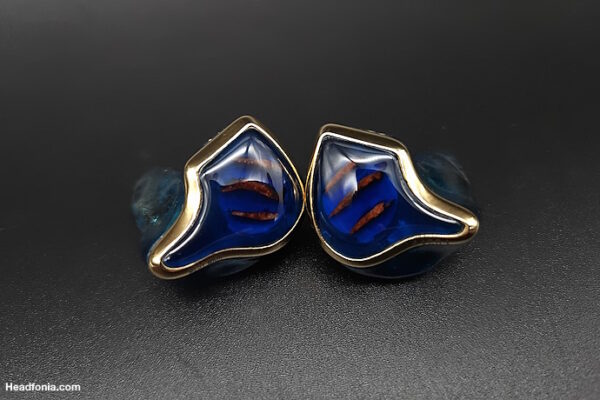Sound
FiR Audio describes the M5’s sound as follows: ”effortlessly massive sound, with shocking clarity and extension on both ends”. The description of the M5’s sound was done with the Astell&Kern SP2000 DAP as main source and always in a balanced configuration.
General Sound
We will go into detail on the different Atom modules in a bit. As you will see, Linus also has the M5, and even in universal as well as a custom model. He will be comparing both later in this article in a quite extensive comparison chapter. Stay tuned!
The FiR Audio has a darker kind of tuning and the presentation is intense. It’s not aggressive, but it’s full bodied and it at the same time draws you in to the music. I find the M5 to be a very emotional and engaging monitor which genuinely makes me enjoy my favorite tracks and albums.
The M5 isn’t the strongest monitor when it comes to technicalities and ultimate detail rendering. With the M5 it’s more about impact, presence and musical enjoyment. If you’re in to note decay, note extension and layering the M5 probably won’t impress you. If you’re looking for body, impact, engagement and musicality, then the M5 could be the right one for you.
Signature-wise I wouldn’t call the M5 neutrally tuned, but it’s not a warm sounding monitor either, it’s somewhere in between. The presentation is relaxed and smooth. Some describe the M5’s sound as more dry, and though I see why one could say that, I do find it to be sufficiently clear and energetic to not call it that myself.
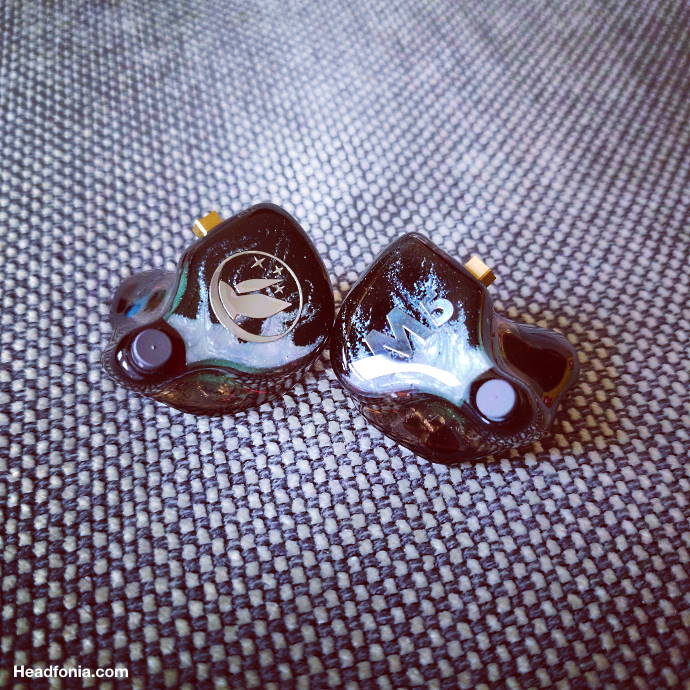
Sound stage-wise the Fir Audio M5 scores pretty good both on top and at the bottom, the DD and EST drivers certainly play a big role here. From lows to highs you get a normal and fair amount of air and spaciousness. The M5 isn’t the most open sounding monitor, but it certainly isn’t an intimate one either. Layering-wise it’s good but not the most pronounced, and the lows here score best. The stereo imaging with the M5 is really nice. The Left-right balance is a pure pleasure.
Atom Modules
Black 13db
This module has the least impact and it lets the upper mid and treble region come out more. Bass is compact and tight but it has good presence and depth. Bass reaches low with good sub bass presence and the layering here is the most impressive. The mids also sound full and they are nicely spacious. The vocals here are excellent, they are natural end blend in perfectly. The treble section is also spacious and carries good energy. Treble is also full sounding but it’s exciting and lively at the same time.
Gray 15db
An increase in fulness and impact, but still very much within acceptable levels. Bass is bigger in body and impact, and it’s slightly less tight. Depth and layering are equal to with the black filter. To me the real difference between the black and grey filter is in the bass section, and the mids and treble don’t get impacted. Because of the added fulness however, the treble’s characteristics are just a bit less transparent.

Gold 17dB
The big difference for me here is that the energy and excitement of the treble comes back out more compared to the grey module. I do love what it does with the higher regions, but it’s the most contrasting sound with the lift in bass and the energy jump. I wouldn’t call this a v-shaped sound signature as the mids have more than enough presence (still with great vocals) but the bass and highs just jump out more.
I have changed the modules many times, but the one I tend to use most is the grey module. It has the best overall sound for all musical styles mixed. I find it to be the most spacious, with the best layering in bass and mids and the best stereo imaging. It just hase a nice balance. Linus seems to agree on this “setting” as well, but it for you of course might be completely different.
Intro + Comparisons Part 1 – Linus
Before I start with the comparisons too, I want to talk just a bit about the custom Fir Audio M5 I have got. I’ve seen a similar design on FiR’s facebook page: a matte black shell with custom metal inlays. Simply gorgeous. When I got to design my own CIEM, I was already set on matte black shells. But then I got offered to do metal inlays, which opened up quite a few options for me. In the end I went with the logo of electronic music pioneer Aphex Twin. The outcome is just incredible in my opinion. The matte black CIEM with the silver metal logo. Perfect.
Another thing I want to talk about is the feel of the matte shells. Unlike CIEMs that are finished off with a layer of lacquer, the M5 is sandblasted to achieve the matte look. It’s stunning, but it has a downside. When I wear them and move around, it sounds like a piece of cotton in my ears. I am sure you know exactly what I mean. At first it was distracting, but I got used to it after a while. And as long as there is music playing, it’s not even noticeable. So just listen to more music. 😉
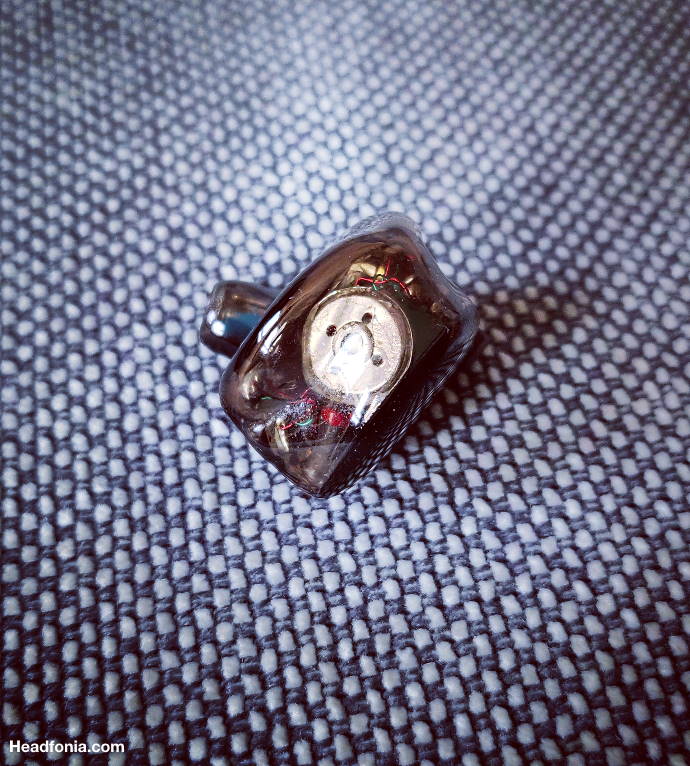
Yet another thing I want to note is the RCX connector of the custom. It’s a proprietary design by FiR Audio. Made to withstand 5000 connections/disconnections. That’s not what got my attention though. What I like about it, is how incredibly simple it is to connect the cable to it. Plus, I always feel like it’s a sturdy and secure connection. With MMCX I am always afraid of breaking something. RCX on the other hand just snaps in place and sits impressively firm in there. While I am not a fan of proprietary connectors, this one is so awesome that I had two of my cables reterminated to use RCX. I simply love it. Big shout-out to FiR for that! Too bad the universal doesn’t use RCX.
Now on with some comparisons. In this section we will be taking a look at a few things. First, how does the CIEM compare to the universal M5? A tubeless CIEM is an incredibly difficult thing to do. There are so many factors you have to take into account. Like driver placement, room acoustics, damping and whatnot. Creating a CIEM that sounds just like the universal is more than hard, and there are differences between the two. We will see a bit later what those are.
Second, how does the M5 compare to its own stable mate – the M4? And lastly, third, is the M5 fit enough to battle the competition? We will find out how the M5 compares to the also tube-less Tia Fourté as well as flagships like the Empire Ears Odin or Noble Audio Sultan.
All comparisons were done using stock configurations (cables, tips) and with the almighty Chord Electronics Hugo2 as weapon of choice. Mentioned prices are for the universal models and in US Dollars. If the prices changed after publication, you know where to send your complaints to – not me.
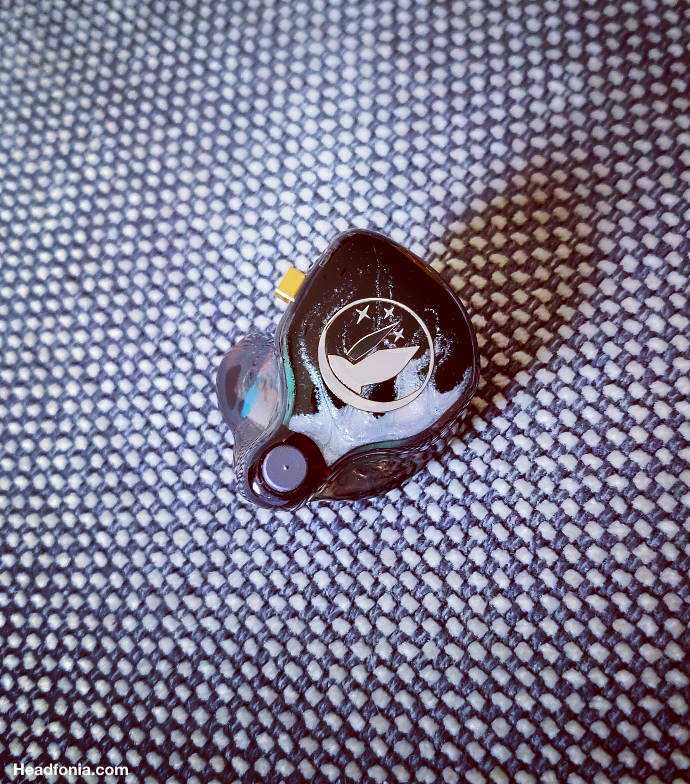
FiR Audio – M5 (Uni – 1DD/3BA/1e-stat; $2,799)
When listening to both units with the Hugo2, I can pick out changes in the signature as well as in their technical performance. Custom and Universal certainly have their own strengths. I installed the gray module in my custom Fir Audio M5, as it is the same as the universal uses internally.
Compared to the custom the universal is less dark in the lower regions. It has an even more agile treble region that sounds a bit brighter in comparison. The universal appears more wide-spread in terms of sound stage dimensions to me. The custom is a bit more closed in. The universal is more holographic in its sound. It presents the music more in front of you, while the custom pulls the scene closer.
The custom has a heftier and meatier low end. While both deliver excellent impact, resolution and especially texture, it is the custom that puts more weight and density in the bass. Lows on the universal sound tighter and a bit faster, while they are thicker sounding on the Custom M5. To my ears the custom M5 also has deeper low-end extension. It pushes through a bit more sub-bass rumble than the universal.
Mids sound more open and lighter on the universal M5, while the custom again gives them more weight and a darker tone in general. Both versions don’t display the mids with a lot of richness, which is something I’d like to see. But out of the two it’s probably the custom M5 that saturates the music a bit more.
In terms of technical performance there are also differences, apart from the aforementioned stage dimensions. The universal appears cleaner and with a darker background. It creates more contrast between the instruments and the background. To my ears, the universal also has a touch better layering and placement. It seems more in control when it comes to complexities than the custom.
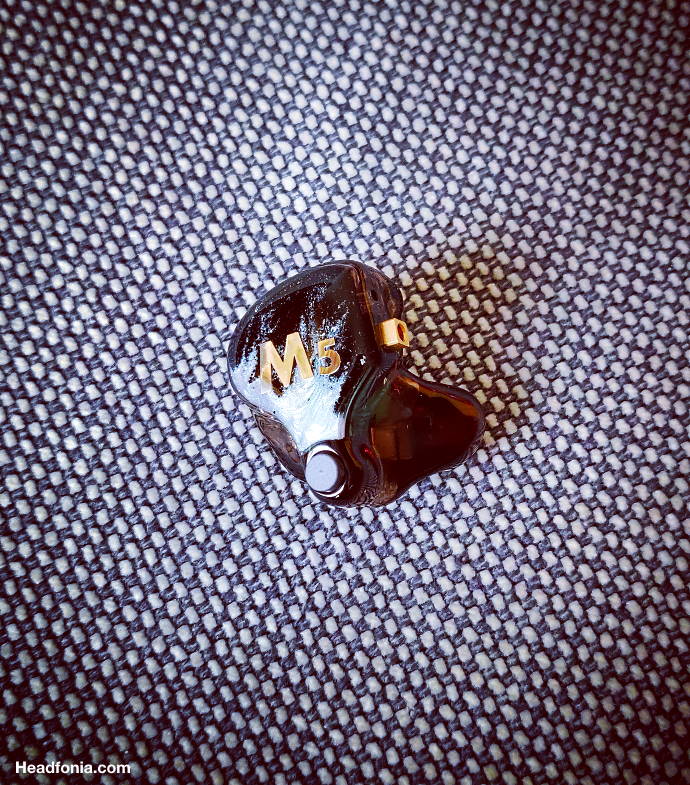
The treble on both is also noticeably different. The custom sounds less sharp and hard edged. The universal pushes slightly more volume in the highs to my ears. It also creates an airier presentation and has a slightly wider extension. Out of the two, the universal sounds hotter and closer to sibilance to me. People who have lower tolerances for that, should be alerted.
Both versions have an intense signature, with impactful lows and energetic treble. But the custom is the darker and smoother sounding one of the two. The universal is more neutral in the mids, it has lesser body but performs better in terms of technical abilities.
FiR Audio – M4 (1DD/3BA; $1,899)
The Fir Audio M4 is the second highest model of FiR Audio. Both the M4 and M5 are all tube-less designs, using dedicated sound chambers for their direct radiating drivers. In a tuning perspective these are quite different though.
The M4 is noticeably warmer, fuller and richer sounding than the M5. It has a higher focus on the mid to upper bass segment, whereas the M5 goes deeper into sub-bass with more rumble. The M4 portrays bass with a smoother texture. The M5 has higher resolution and finer texture in comparison. It has higher impact and thunder than the M4. The M5 is also faster in its lows, which makes them sound more dynamic and punchy.
The mid-range of the M4 is definitely richer and more organic sounding. The M5 on the other hand sounds more open and grander. M4 is thicker and more creamy if you will. Instruments appear fuller and richer on the M4 than on the M5. FiR’s M5 is more holographic to my ears. The M4 has a more analogue sounding mid-range, while the M5 sports higher levels of transparency.
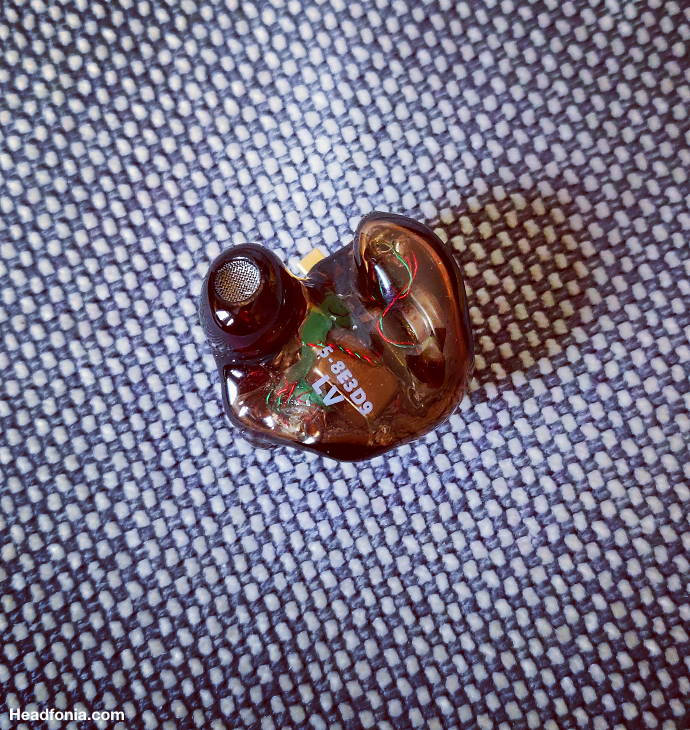
Treble is certainly softer and silkier with the M4. The M5 is sharper, faster and sports higher levels of energy. It also has higher extension and provides noticeably more air in the rest of the spectrum. The M4 has a richer top end, that might not go as far as the M5’s, but it sounds more pleasing and safe. Where the M5 can become hot, the M4 will not.
In terms of technical performance the M5 is the clear winner to me. It creates a bigger venue, has better layering and higher resolution. The M4 can smudge over details, which will make their way through without any problems on the M5. FiR’s flagship also has a darker background and better contrast. Instruments are separated with a sharper cut and placed more carefully in the room.
64 Audio – Tia Fourté (1DD/3BA; $3,499)
The 64 Audio Tia Fourté has long reigned as the absolute king of 64 Audio’s line-up. It was created during a time when Bogdan Belonozkho was still with 64 Audio. Now he’s here with his own venture and takes a swing at the Fourté with his own tube-less monitors.
Both monitors do have similarities and huge differences in my opinion. For example, both the M5 and the Fourté have a strong bass section. But the M5 goes deeper with more rumble. It has a more impactful low end, while the Fourté has more body in it. Fourté provides a denser bass, that has more weight in it. Especially the mid and upper bass stand out here in my opinion. The M5 has higher resolution in the lows though. It has finer texturing and contouring as well. The Fourté might sound a bit more natural in the bass, but the M5 is the more exciting one to listen to.
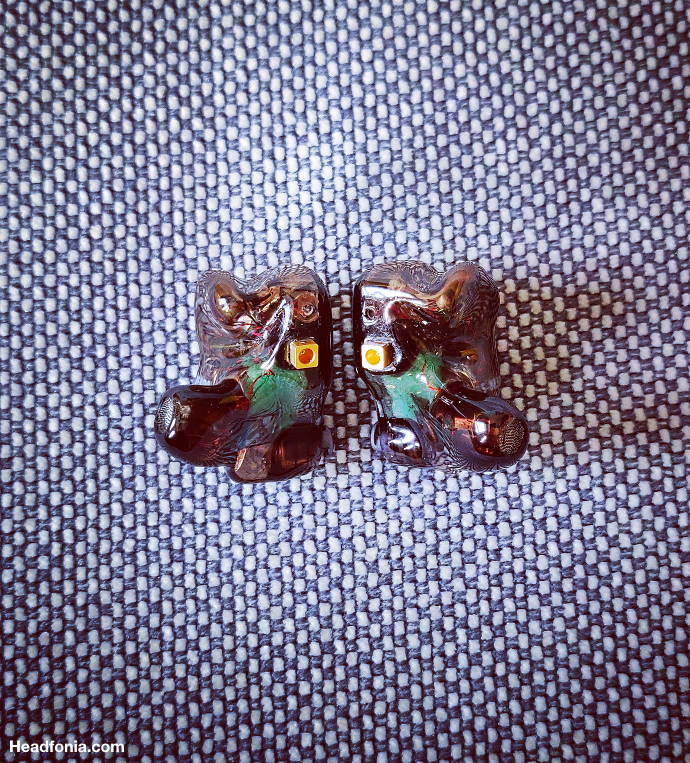
In the mids Fourté has always been a bit weird. There is this tilt in the upper mid-range that makes it sound somewhat thin and off. Both characteristics don’t apply to the M5. The M5 is fuller and darker sounding in the mid-range. It sounds a bit more natural and organic in comparison. The Fourté is lighter and faster in the mids.
Fourté creates a wider and more holographic stage. It pulls you right into the scene. The Fir Audio M5 makes you watch from the audience. Both have very high resolution, but the Fourté does edge out the M5 slightly here. It presents details more clearly. The M5 and Fourté both have impressive imaging, but the Fourté separates instruments clearer.
The treble is similar on both. The M5 and Fourté create a forward and bright treble. But the M5 is safer from sounding sharp and sibilant. The Fourté can create piercing levels of highs, which definitely won’t be for everyone. I’ve heard so many people say the Fourté is too sharp, too hot, too aggressive in the treble for them. And I get it. The M5’s treble is everything to a lesser degree. But also has to be enjoyed with caution.
The rest of the comparisons and more on sound is available on the next page, click here.





